Here you will find photos of the plants we saw on our day trip to El Estero de Punta Banda, on the south end Ensenada's Bahía de Todos Santos. The main page for this field trip can be found here.
Click on any photo for a larger image.
Plants are listed A-Z by family, then A-Z by species. Common names in English and Spanish are noted if available.
Families: A-B | C-E | F-M | O-Z
Asteraceae (Sunflower Family)
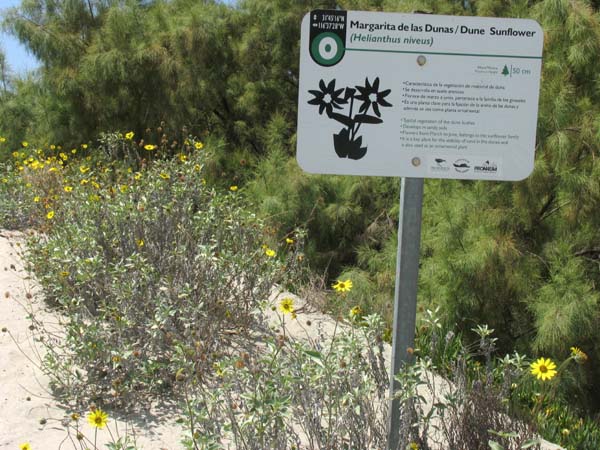
Helianthus niveus subsp. niveus. Dune sunflower, Margarita de las dunas. The leaves are silvery gray, helping it to reflect the strong sunlight from both the sun and the sand. See a CalPhotos' closeup of the Dune Sunflower.
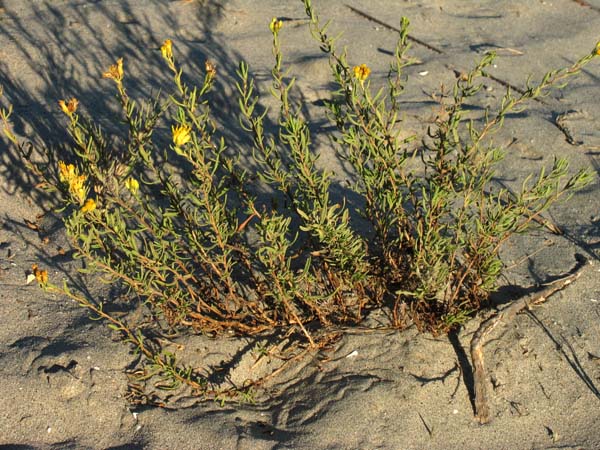
Isocoma menziesii. Goldenbush. A small to medium shrub with spatulate, resiny leaves and yellow, discoid flower heads.

Jaumea carnosa.
Marsh Jaumea, Salty Susan.
This is a low, fleshy plant. When not in flower, it blends right in with the Batis maritima (below).
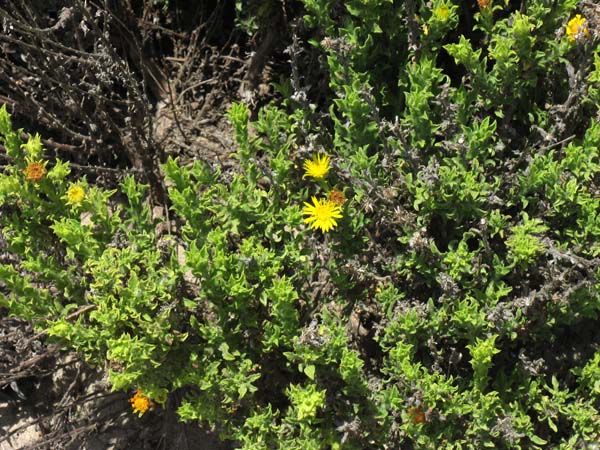
Heterotheca sessiflora (subsp. sessiflora ??). Beach Goldenaster. I didn't get to key this one out, but it is reported as growing here. It is found at the immediate coast between Tijuana and Ensenada.
Batidaceae (Saltwort Family)

Batis maritima. Saltwort, Barrilla, Deditos. This is a prostrate creeping perennial. The succulent leaves are generally two-angled with a rounded side as well. See our Calflora image.
Chenopodiaceae (Goosefoot Family) (also = Amaranthaceae)

Salicornia bigelovii. Pickleweed, Hierba salmuera. A succulent annual living in saline soil near or in water.
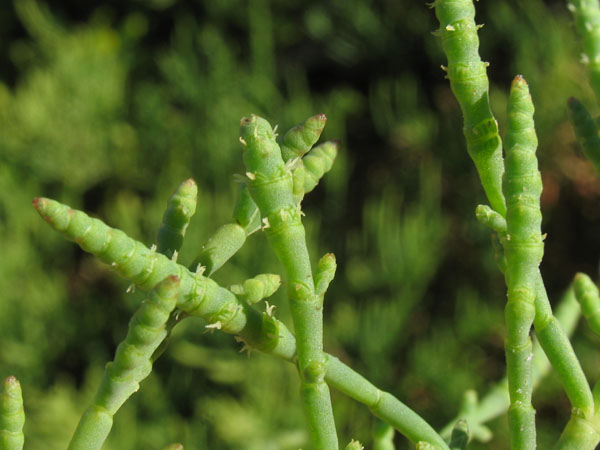
Salicornia pacifica. Pickleweed, Hierba salmuera. The tiny white things sticking out are the stamens. Flowers lack petals and are wind pollinated.
Crassulaceae (Stonecrop Family)
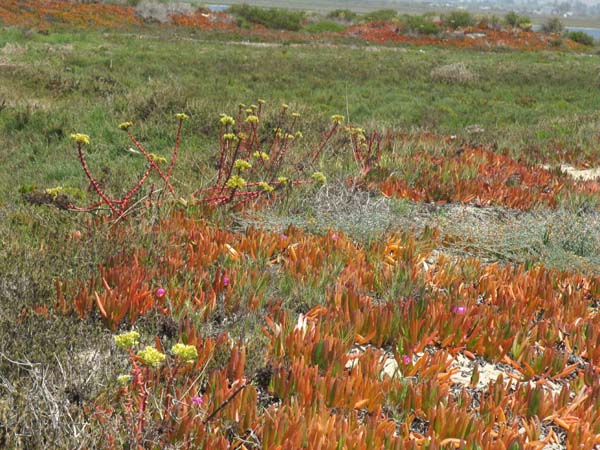
Dudleya sp. (Dudleya brittonii??). Live forever, Siemprevive
Cuscutaceae
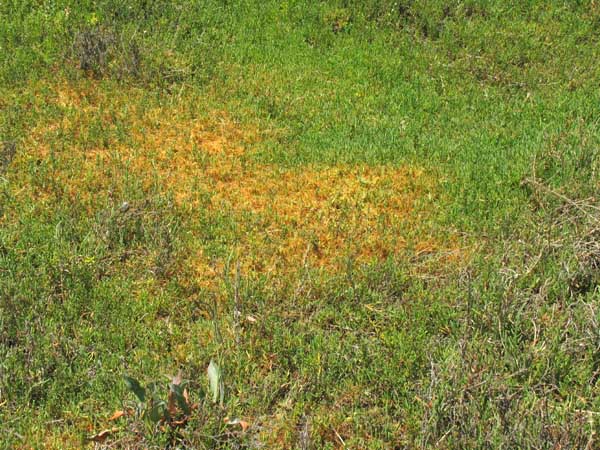
Cuscuta salina. Dodder, Chupones. Dodder lacks chlorophyll, which usually gives plants its green color, and so must tap into the host plant for nutritional needs.
Fabaceae (Pea Family)
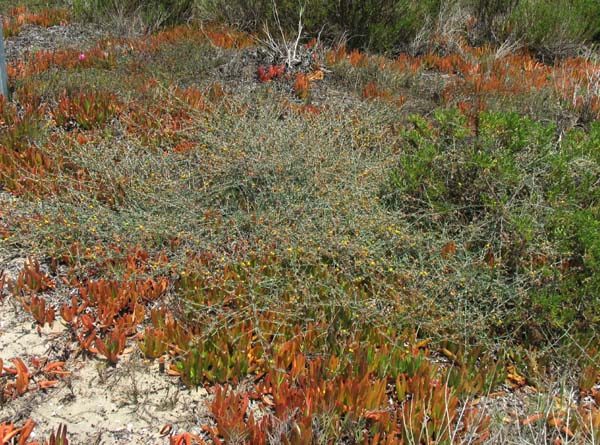
Acmispon prostratus. Wire bird's-foot trefoil. Great to see a native perennial beating out the "invasive" iceplant for a change.
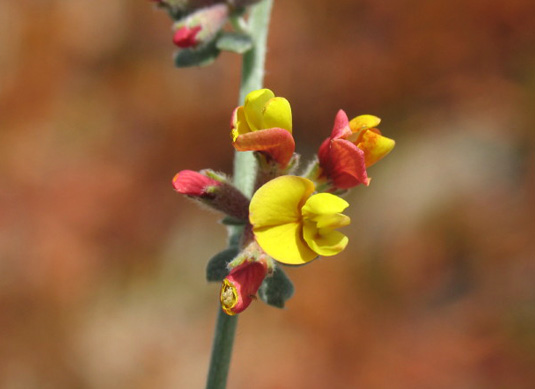
Acmispon prostratus. Each flower in the cluster is 5-7 mm long.
Frankeniaceae (Frankenia Family)
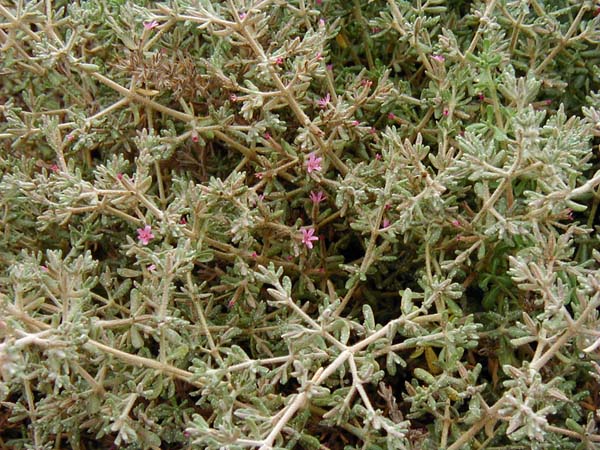
Frankenia salina, Marsh Rosemary, Hierba reuma. Here, this is a very low perennial, mostly under 12" tall. Its leaves are slightly fleshy. It can grow up to 2 ft high and form mounds.
Juncaceae (Junco Family)

Juncus acutus, Spiny Rush, Junco. At this site, they are about 60 cm high by 1 m diameter. Stems are very stiff and tips are sharp.
Onagraceae (Evening-primrose Family)
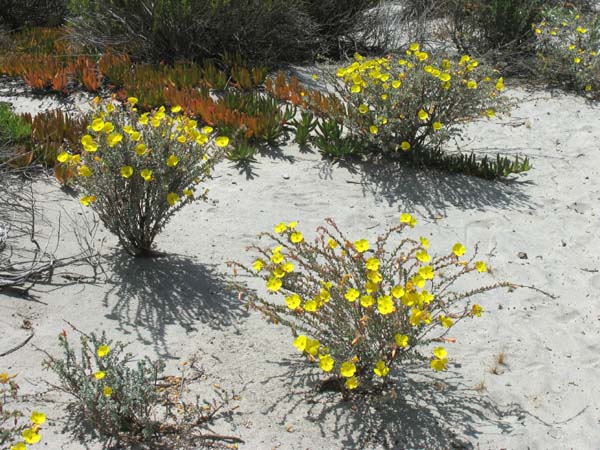
Camissoniopsis cheiranthifolia ssp. suffruitcosa, Beach evening-primrose. This 30-90 cm H perennial was very abundant on the dunes and marsh edges, from the Hwy 23 junction out to the preserve.
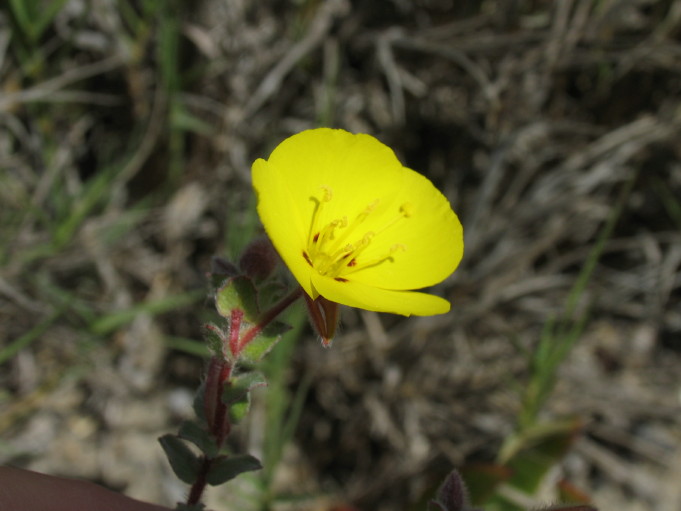
Camissoniopsis cheiranthifolia ssp. suffruitcosa. Close up of flower. Note 4 petals. They are hard to see, but there are 8 stamens and a single style with a globose stigma.
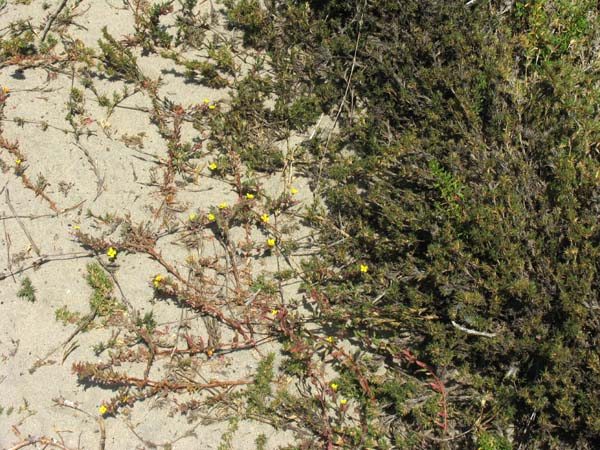
Camissoniopsis sp., Evening primrose, Suncup. Haven't keyed it out yet. Could be C. robusta, C. lewisii or C. bistorta. The last is on the area's plant inventory.
Poaceae (Grass Family)
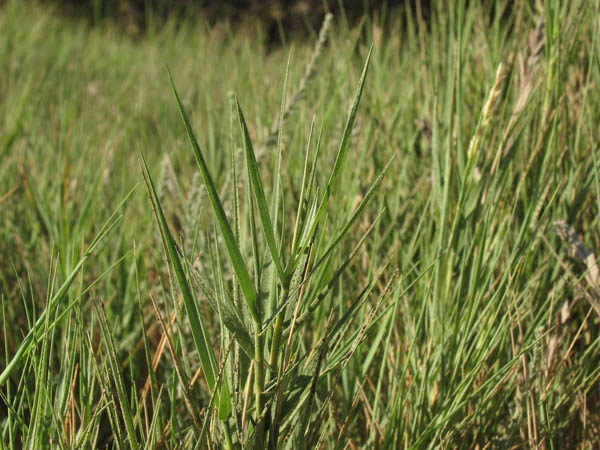
Distichlis spicata, Saltgrass, Zacate salado. A perennial grass spreading mostly by rhizomes. The stems are erect. More CalPhotos.
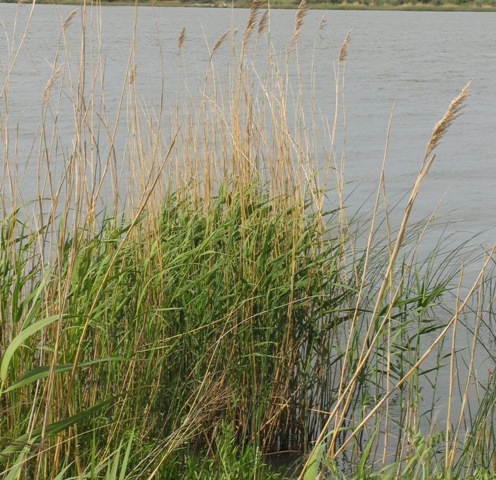
Spartina foliosa. Cord Grass, Hierba cordón. This salt grass grows in the mud right on the edge of the marsh, so it spends part of each day innundated. More CalPhotos of this species.


Isocoma menziesii. It was actually too early in the season for the flowers or fruit, as pictured here. This is from another location (San Quintín) from a different autumn trip.
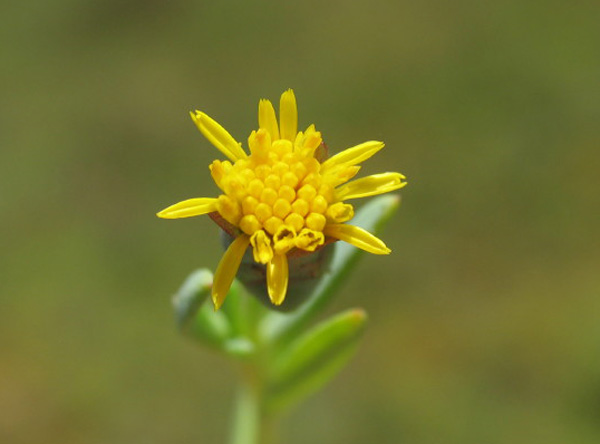
Jaumea carnosa. The flower heads are about 1-2 cm in diameter.
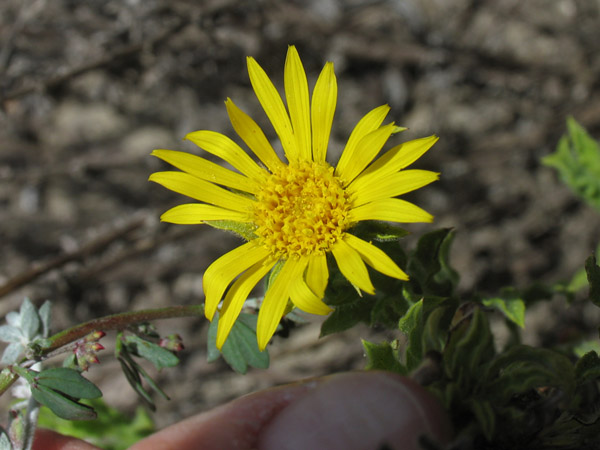
Heterotheca sessiflora (subsp. sessiflora ??), Beach Goldenaster. This shrub had glandular-hairy herbage that was slightly stickly and had a very pleasant smell-kind of a minty, camphor smell. The flower head was about 1" (2.5 cm) D.
[Top]

[Top]
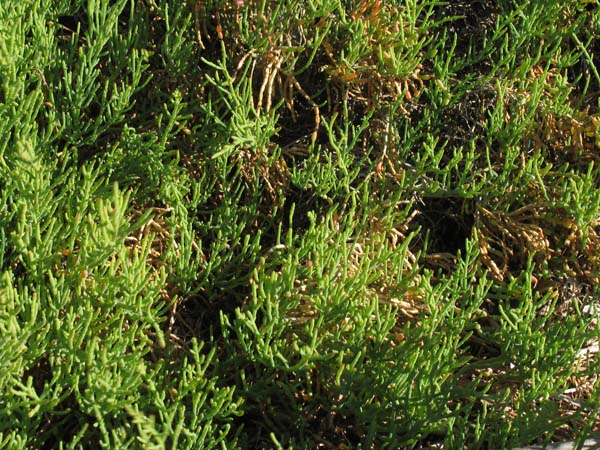
Salicornia pacifica. Pickleweed, Hierba salmuera. A succulent, creeping perennial generally in saline soil near or in water.
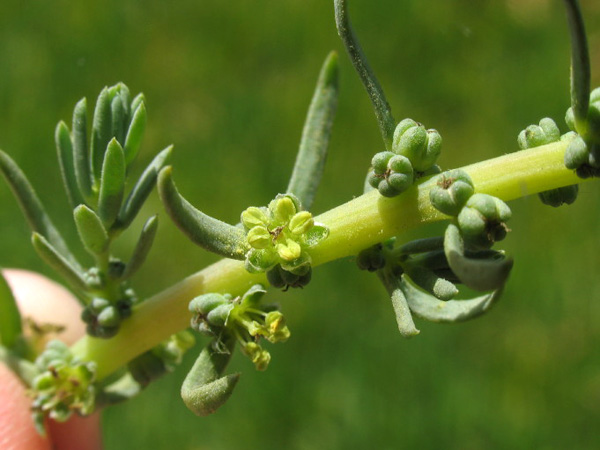
Suaeda taxifolia. Sea Blite, Romerillo. A shrub with succulent new growth, including leaves. The yellow, star-like structure in the middle of the photo is composed of 5 yellow stamens with an almost invisible set of 3 styles at their center. To the right of the open flower are clusters of unopened flowers.
[Top]

Dudleya sp., Live forever, Siemprevive. Same plant, only closer.
[Top]
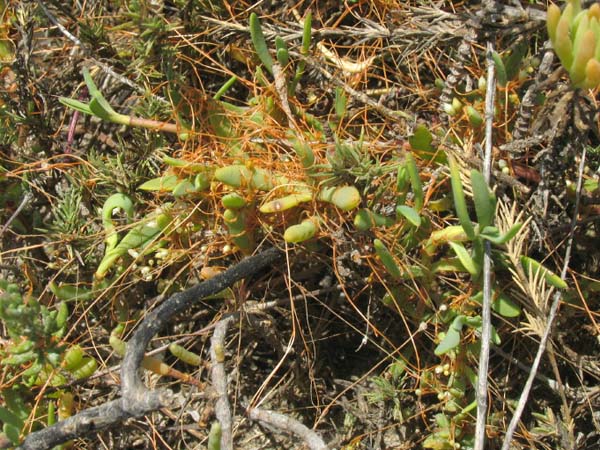
Cuscuta salina. Dodder, Chupones. The bright orange threads are the haustoria,
or specialized roots, of the plant that bore into the host's tissue to extract nutrients. Here they are attached to Batis maritima,
Jaumea carnosa and Frankenia salina.
[Top]
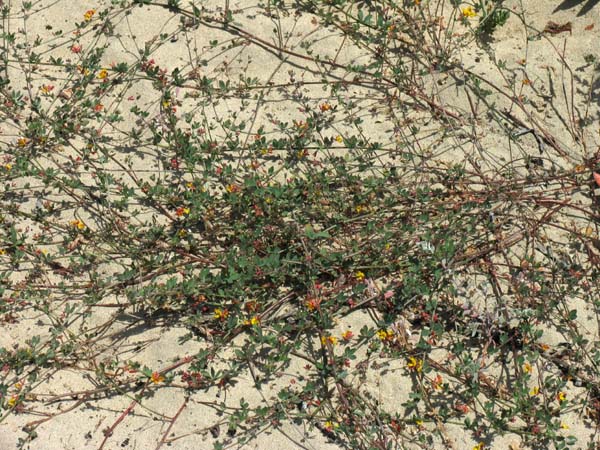
Acmispon prostratus. Very fine stems create a spiderweb on the dunes and sometimes on top of other plants.
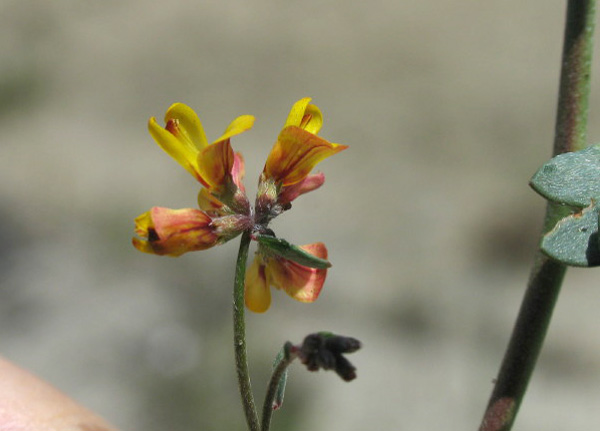
Acmispon prostratus (synonym = Lotus nuttallianus).
[Top]
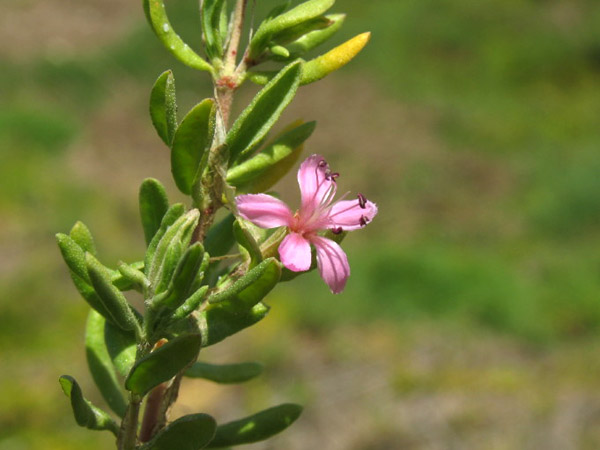
Frankenia salina. The pinkish flowers are 5-14 mm in diameter.
[Top]
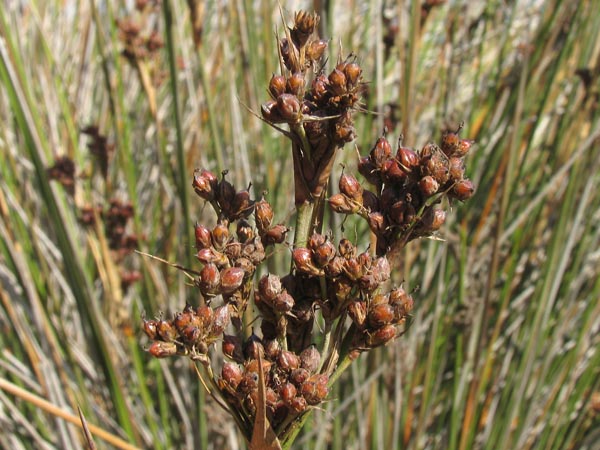
Juncus acutus. This is an image from a previous sighting of the species elsewhere. We got poked a lot, clawing our way through the thicket of them and when taking the photos.
[Top]
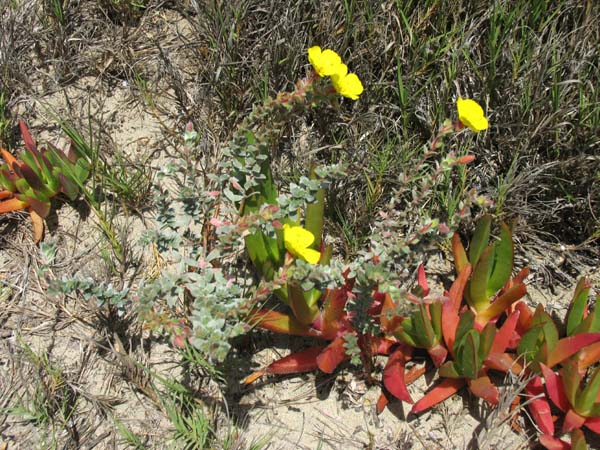
Camissoniopsis cheiranthifolia ssp. suffruitcosa. Smaller specimens under 20 cm tall. This species has thickish, hairy leaves to withstand life on the bright, hot dunes. Non-native iceplant in the foreground.

Camissoniopsis cheiranthifolia ssp. suffruitcosa. A developing fruit. When mature, this capsule will split longitudinally from the tip, revealing 4 thin chambers containing the tiny seeds.
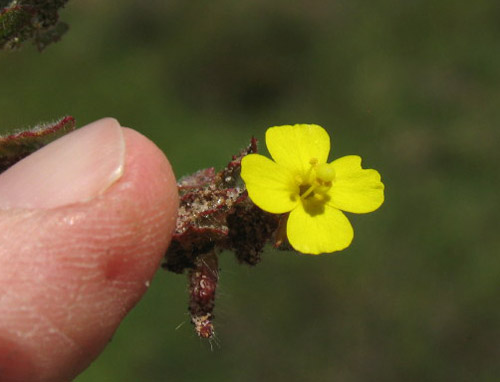
Camissoniopsis sp.
Evening primrose, Suncup.

Distichlis littoralis. Salt cedar, Zacate salado. A low, creeping perennial grass with very sharp leaf tips, making it hard to kneel to take photos.
Families: A-B | C-E | F-M | O-Z


































